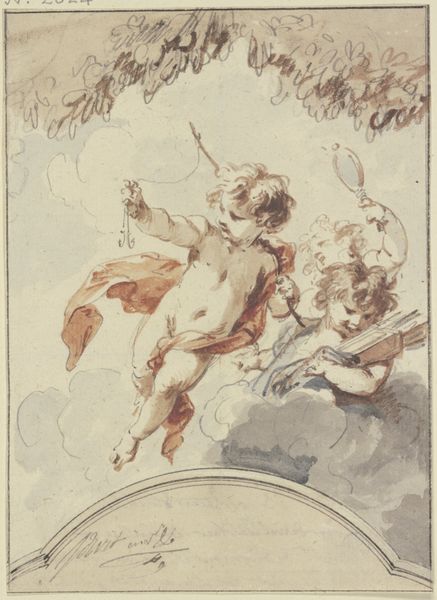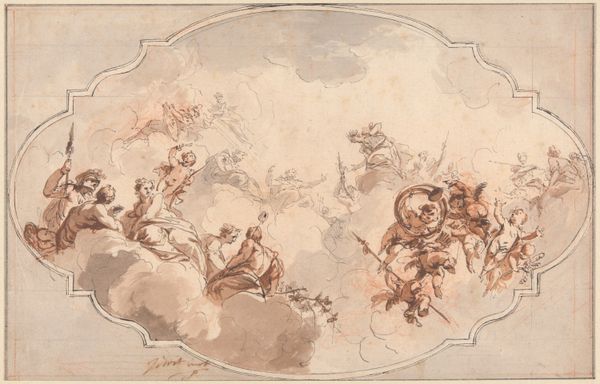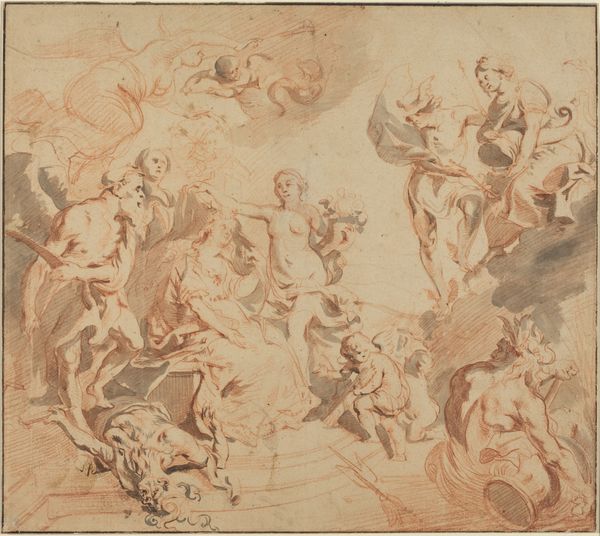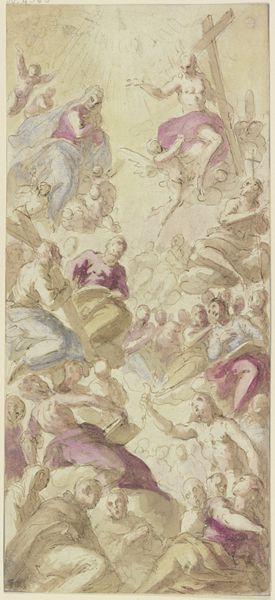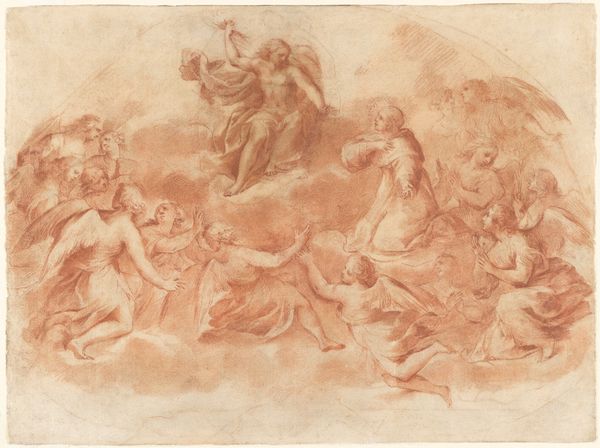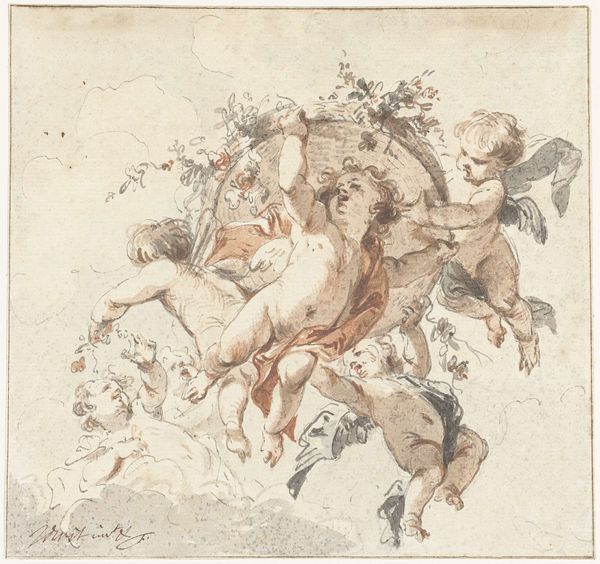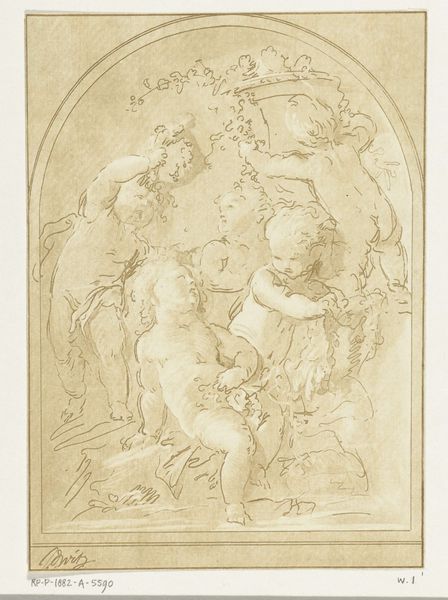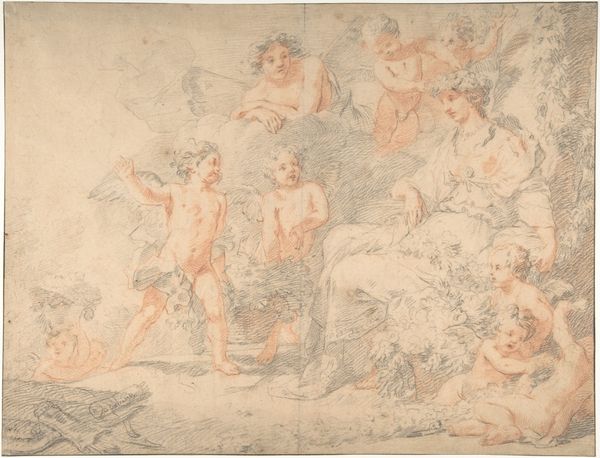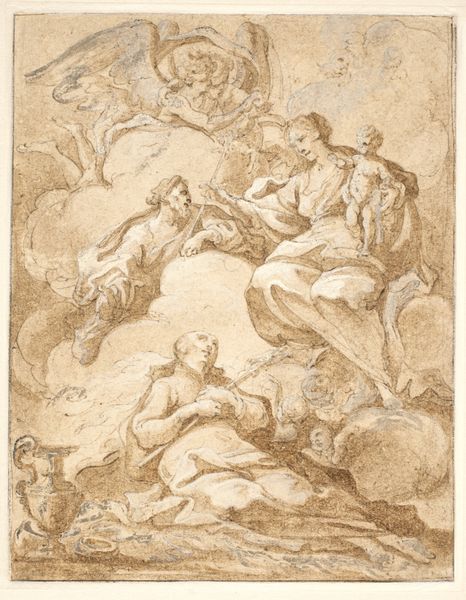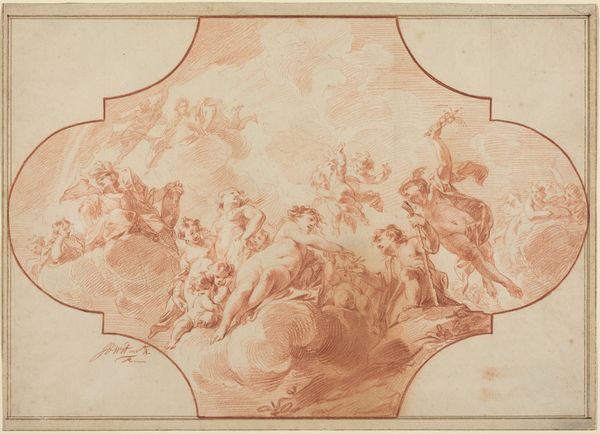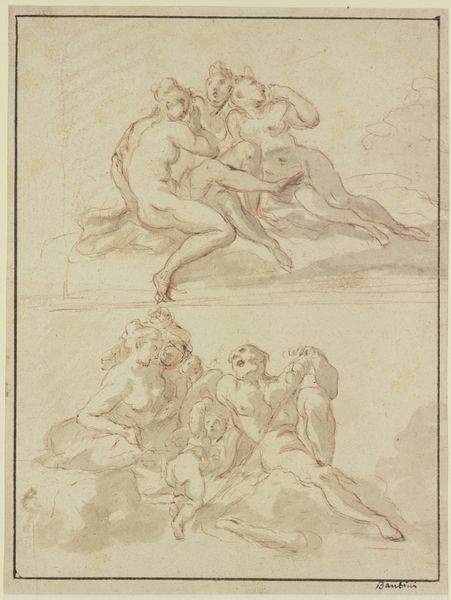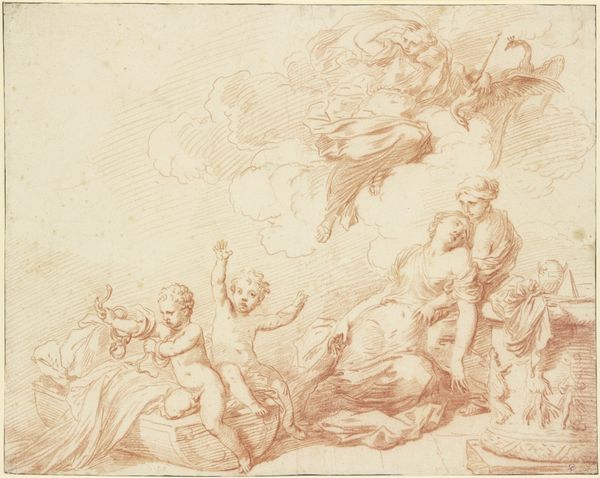
drawing, watercolor
#
drawing
#
allegory
#
figuration
#
watercolor
#
history-painting
#
watercolor
#
rococo
Dimensions: 7 3/8 x 8 7/8 in. (18.73 x 22.54 cm) (image)9 1/2 x 11 in. (24.13 x 27.94 cm) (sheet)
Copyright: Public Domain
Curator: Looking at Jacob de Wit’s "Allegory of Painting" from 1729, it’s interesting to note how Rococo traditions inform this delicate watercolor and ink drawing. Editor: My initial impression is ethereal. It feels as though a flurry of cherubic energy has been captured mid-flight, creating a scene of joyful artistic inspiration floating above us. Curator: Precisely! De Wit, renowned for his ceiling paintings and theatrical backdrops, clearly aims to evoke the sense of weightlessness. The drawing suggests not only a celebration of artistic creation, but also provides insights into the materials he employed. Look closely at the ink and wash; its texture mirrors cloud formations in a tangible, earthly way. The blank shields the cherubs carry feel like they are ready for future commissions and blank slates for paintings yet to come. Editor: Those blank shields held by the cherubs are so curious and really add another layer to it. Considering the social context, I wonder how the art world and institutions of the time shaped its interpretation. Were patrons seeking such uplifting imagery to perhaps signal their sophistication and refinement through these art pieces in their homes? Or perhaps to be placed in a public setting to encourage more artistic pursuits? Curator: I’m thinking more along the lines of the studio process here. Notice how the artist meticulously layered watercolors to build the soft forms. I wonder what his studio setup was like at that moment—the quality of the paper, the pigments used—and how the light hit this while being made. I also notice that De Wit would have been catering to very specific patron requests that also influence the finished outcome. Editor: That’s a really wonderful observation. How these raw materials translate and convey broader social ideas – that intersection is exactly where the drawing seems to sit! The fact that the Minneapolis Institute of Art even holds this drawing tells us something about its value beyond the individual maker’s hand too, you see. The work represents cultural prestige. Curator: True, true. Ultimately, examining this piece forces us to reconsider the making of an object, both artistic and material, and to think about art not just in a visual sense but also in a very tangible and physical process. Editor: And in turn, forces us to examine our relationship with that past, both historically and materially! What a lovely note to consider that interplay on.
Comments
No comments
Be the first to comment and join the conversation on the ultimate creative platform.
